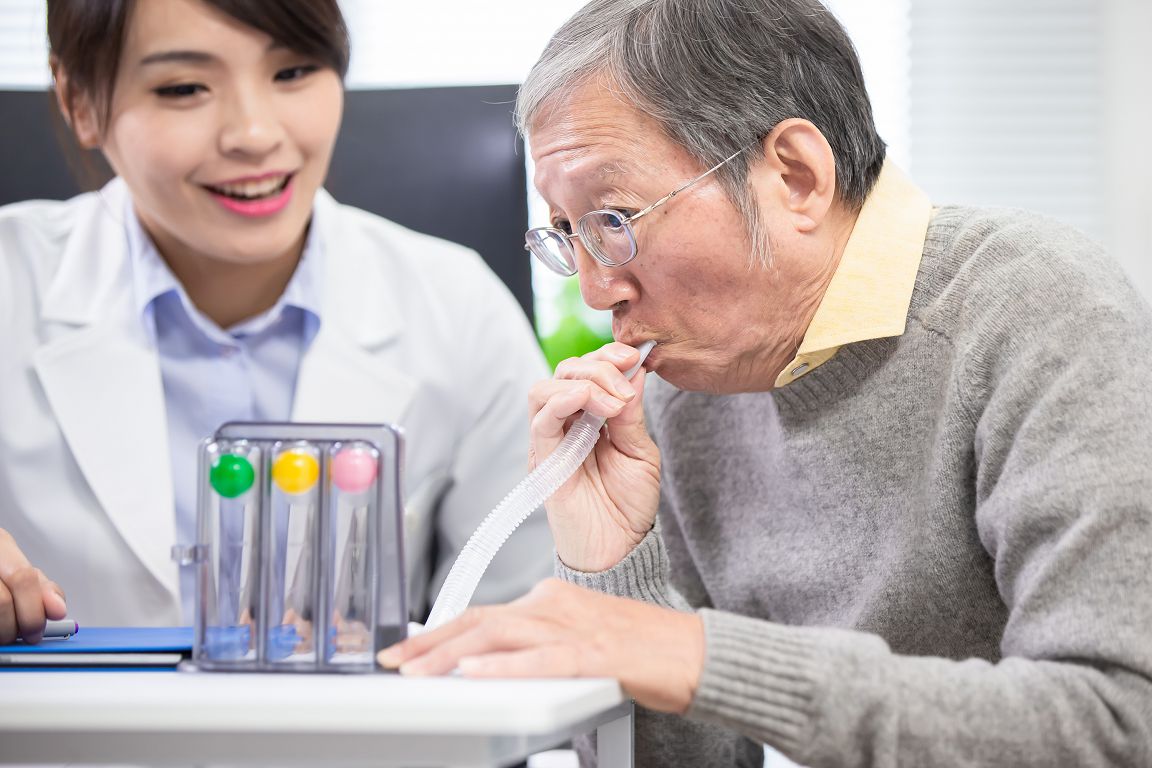The operation area, anesthesia process, post-operative wound pain or use of girdles could lead to long-term respiration and ineffective coughing motion, thereby resulting in sputum deposit with incomplete pulmonary expansion or secondary infections as well as other complications. If you are over 60 years old, smoke, cough before the operation, or have sputum or lung function improperly, the likelihood of pulmonary complications after operation will increase substantially, which thereby needs the implementation of deep breath, cough and other related rehabilitation exercise to speed up the recovery of operation and early discharge from the hospital.
Prevention of Post-Operative Pulmonary Complications
- Abdominal deep breathing – Can be executed after the surgery with clear consciousness.
Relax the shoulder
- Place the hand under the lower chest bone and the belly. Inhale via the nose slowly and slowly puff out the abdomen while inhaling. Continue to inhale to the fullest.
- Inhale full air and hold the air for 3 seconds. Pout the lips to slowly exhale the air.
Use of Deep-Breath Training Device
- Use one hand to fix the mouthpiece and hold the pulmonary device upright with one hand. Exhale first to clean the air inside the lung.
- Put the mouthpiece in the mouth to inhale sufficient airflow through stable speed so that the first ball will rise to the top. The second ball does not move yet and please enhance the inhaling airflow to continue inhalation until all three balls rise. Hold the air for 3 seconds after full inhalation.
- Pout the lips to slowly release the air.

The above two are methods of deep breathing. Use the two methods after the operation in every hour for 8~10 breaths. After each deep breath, calm down and breathe for a while before the next deep breath to avoid excess ventilation that leads to dizziness and numb fingers. Please suspend the treatment in case of such phenomenon and resume to the action after recovery.
Coughing and wound fixation – Facilitates coughing out sputum
- Sit up and bend the body slightly forward.
- Use a small pillow and towel to fold into blocks. Press the wound with two hands to avoid causing pain due to the pulling of wound while coughing.
- Slowly inhale to the fullest, use slight abdominal power and open the mouth. Quickly cough out the sputum hard, with the sound coming from deep inside the lung.
Thorax Exercise – Maintain the resilience and intensity of the chest
- Stretch the arms outward and lift up. Cooperate with inhaling motion while lifting u. Lift up while inhale and put down the arm while exhale.
- Exercise with the two arms interchangeably.
Caution
- Sitting up as soon as possible and getting off the bed are the best method to promote pulmonary expansion and prevent various complications.
- The aforementioned preventive operation of post-operative complications must be sustained for one week or longer and shall be suspended after the recovery or stabilization of pulmonary function.

